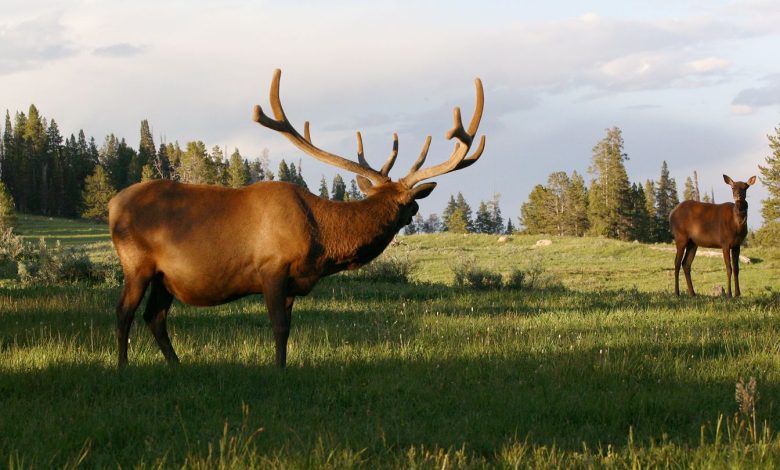Zombie Deer Disease Spreads to 32 U.S. States, Causing Fear It Could Spread to Humans

[ad_1]
An infectious and fatal illness that damages the brain and nervous system has been spreading among deer in the United States.
Chronic wasting disease (CWD) is “expanding” and has now been found in deer, elk, and moose in at least 32 states and four Canadian provinces, according to a December update from the National Wildlife Health Center, a governmental organization dedicated to wildlife disease detection, control, and prevention.
Over the past two months, several areas of the country reported cases of the disease for the first time, including the state of Kentucky, Yellowstone National Park, and Coleman County, Texas.
The illness has earned the nickname “zombie deer disease” because it eats away at the brain and causes stumbling, excessive drooling and head lowering, blank stares, listlessness, and lack of fear of people, according to the Texas Parks and Wildlife Department. As the name of the disease implies, animals also gradually become skinnier, emaciated, or “wasted” over the course of a year or more.
There is no vaccine or treatment, and the disease is always fatal.
A Brain-Consuming Illness
The condition is caused by abnormal protein particles called prions that accumulate in the brain and create sponge-like holes in the tissue. The Wyoming Wildlife Federation describes it as turning the brain into Swiss cheese.
“If an animal has holes in its brain, it’s not able to function normally, which includes finding food, and over the course of months it just wastes away,” said Krysten Schuler, PhD, a wildlife disease ecologist with Cornell University’s College of Veterinary Medicine, in an interview conducted by the American Association for the Advancement of Science.
Dr. Schuler added that this is really a sad way for deer to die, and calling it “zombie deer disease” misrepresents the illness.
“A lot of people have ideas about what zombies are,” she said. “The deer are not coming for our brains. Unfortunately, this is a disease that affects their brain, but they don’t necessarily become aggressive toward humans. They’re still living creatures and deserve a level of respect and empathy around what they’re facing.”
Is Chronic Wasting Disease a Threat to Humans?
Chronic wasting disease is transmitted by direct animal-to-animal contact or indirectly through contact with infectious particles that remain in the environment in feces, soil, or vegetation.
Although there have been no reported cases of chronic wasting disease infection in people, the Centers for Disease Control and Prevention (CDC) warns that a risk to humans may exist. The health agency cites some research suggesting that monkeys may become infected if they eat meat from CWD-infected animals, or come in contact with brain or body fluids from infected deer or elk.
A scientific paper published in 2022 in the journal Acta Neuropathologica found that the barrier for CWD prions to infect humans is not absolute, and that there is an actual risk that it can transmit to humans.
Schuler, too, said there is potential for the chronic wasting disease to be zoonotic, meaning transmissible from animal to human — just like COVID-19. Mad cow disease, which belongs to the same family of illnesses as CWD, originated in cattle, but humans can get a variant called Creutzfeldt-Jakob disease, which is fatal.
To be on the safe side, health officials recommend that people do not consume meat from CWD-infected animals. The World Health Organization has also stressed the importance of keeping the agents of all known prion diseases from entering the human food system.
[ad_2]




